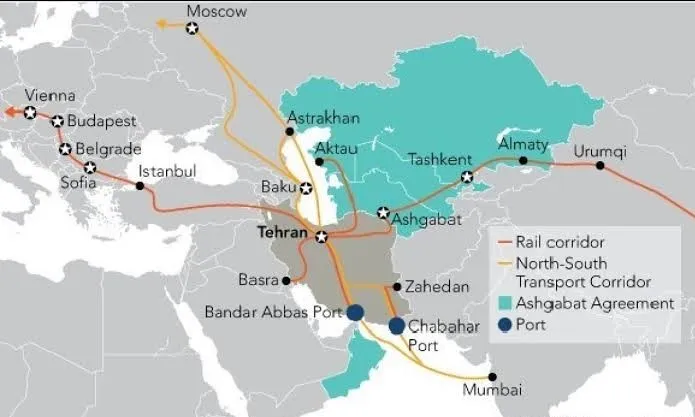Russia has promised to eliminate legal and logistical hurdles preventing the International North-South Transport Corridor (INSTC) from becoming the main transport route of Eurasia in the future.
About International North-South Transport Corridor (INSTC):
- INSTC is a multi-modal transportation route linking the Indian Ocean and the Persian Gulf to the Caspian Sea via Iran and onward to northern Europe via St. Petersburg in Russia.
- The corridor includes seaports on the Persian Gulf and in the Caspian region, as well as road and rail routes.
- Aim: The main purpose of the corridor was to reduce carriage costs and transit time between India and Russia. The transit time is expected to reduce to almost half, once the corridor becomes fully functional.
- Development:
- It was first mooted in 2000. The idea was to build a transport corridor linking Russia’s Baltic Sea coast to India’s western ports in the Arabian Sea via Iran.
- Russia, India and Iran signed preliminary agreements to develop the 7,200-km-long International North-South Transport Corridor (NSTC) in 2002.
- Three years later, Azerbaijan signed up for the project.
- This agreement was eventually ratified by 13 countries — India, Russia, Iran, Azerbaijan, Belarus, Bulgaria, Armenia, Kazakhstan, Kyrgyzstan, Oman, Tajikistan, Turkey and Ukraine.
- Route: The multimodal route begins in Mumbai, India and goes to Bandar Abbas and Bandar-e-Anzali in Iran, then crosses the Caspian Sea to reach Astrakhan, Moscow, and St. Petersburg in Russia




